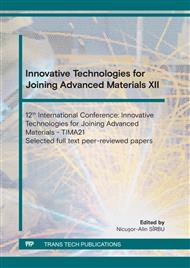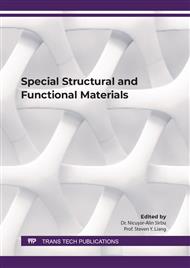p.11
p.19
p.29
p.39
p.51
p.59
p.67
p.73
p.85
The Influence of Temperature on the Tensile Mechanical Properties of PPA
Abstract:
In the automotive industry and not only, more and more attempts are being made to replace parts made of metals with those made of plastics, due to their low weight and low manufacturing cost. Thus, a detailed knowledge of the mechanical properties of polymeric materials is a must. This paper presents a study of the influence of temperature on the tensile mechanical properties of semicrystalline polyphthalamide (PPA). Dog bone specimens were obtained by injection molding and, in order to eliminate the possible moisture absorbed in the place of storage of the specimens, they were subjected to a drying treatment in an airtight oven at a temperature of 80 degrees for 12 hours. The specimens were tested at 5 different temperatures (25, 40, 80, 120, and 160°C) with a loading speed of 5 mm/min. For each test temperature 3 specimens were used, according to the ISO 527-2 standard. With the data extracted from the experimental tests, the mechanical properties were calculated. Also, the force – displacement and stress – strain curves were plotted. After the experimental tests, it was concluded that the dry specimens are more resistant, and with increasing temperature, the PPA material changes from a brittle to a ductile behavior. Moreover, the main tensile properties decrease significantly with increasing temperature (the modulus of elasticity decreases by 66.8% from temperature of 25 °C to temperature of 160 °C).
Info:
Periodical:
Pages:
51-56
Citation:
Online since:
May 2022
Keywords:
Price:
Сopyright:
© 2022 Trans Tech Publications Ltd. All Rights Reserved
Share:
Citation:



